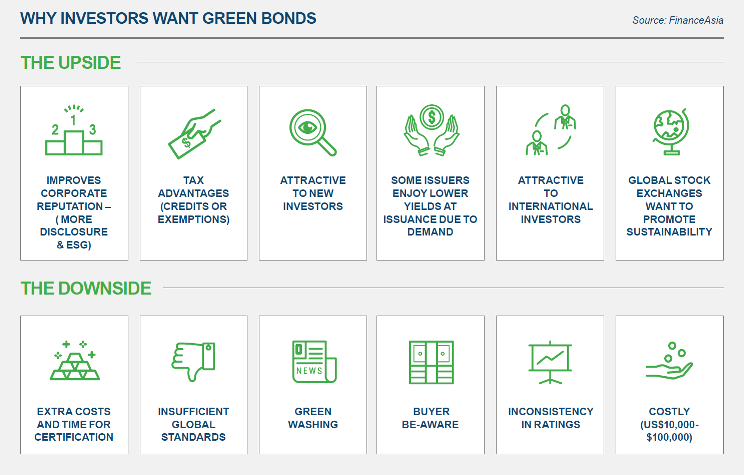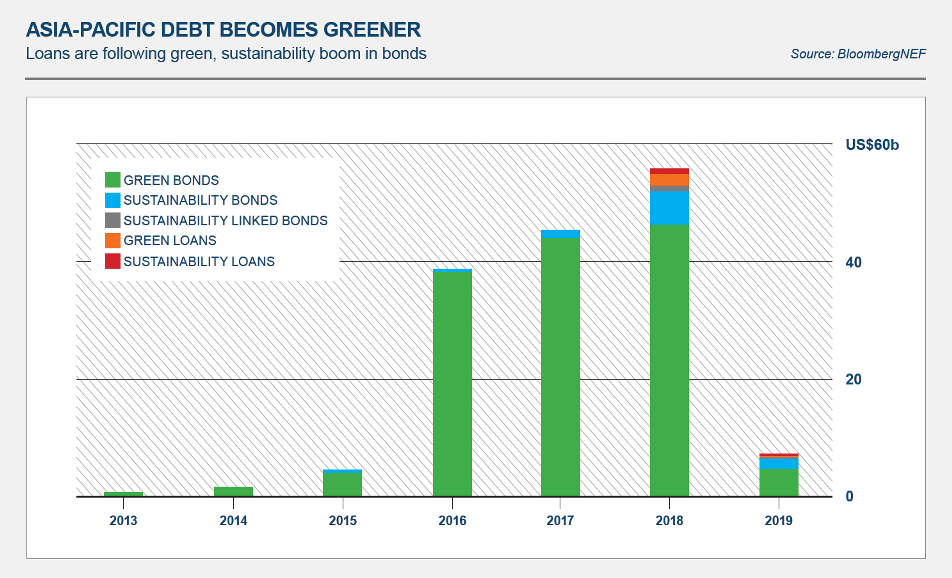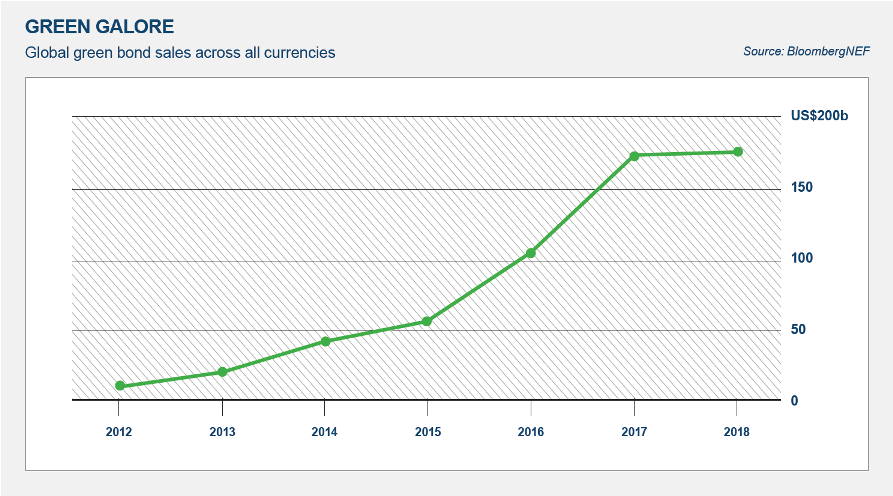The 2015 Paris Agreement set the scene for rising global demand for green and sustainable finance. Although the Asia-Pacific region was slow off the mark, much has changed in recent years as investors add a new focus to their portfolios – climate change investment.
As global temperatures rise, the risks associated with weather-related incidents are increasing. Global attempts to mitigate the effects of climate change have led to a growing demand for investments linked to environmental sustainability.
In parallel, there has been a notable shift by investors and regulators in pushing corporates, not only to adhere to environmental, social and governance (ESG) principles, but also to the next stage – green finance. As demand for green investment outstrips supply, investors are now beginning to turn their attention to a new market – climate change products.
Spooked by the fact global insurers were hit with a record US$160 billion bill for climate-related losses in 2018, there are at least 34 central banks, including the People’s Bank of China, demanding greater international measures to contain fossil fuel emissions, according to Bloomberg analysis.
But while carbon emissions control is needed, any significant divestment of fossil fuel assets by asset managers is predicted to cause considerable disruption to global markets.
The implications of a shift toward international climate change policy is likely to affect the current coal power dependence of many nations in the Asia-Pacific region, in addition to Belt and Road economies. But it will also open up opportunities for renewable energy development since China is a leader in renewable energy.

Rising green
With climate change now firmly on the global agenda, investor interest in green finance and sustainability continues to gather momentum.
Essentially green investment aims to benefit the environment or reduce carbon emissions in a socially responsible way. Green investments span securities, mutual funds, ETFs, green loans and green bonds.
Green bonds, for example, aim to encourage sustainable practices or climate-related projects such as emission and pollution reduction, sustainable farming practices, and water and waste management.
Sometimes called climate bonds, the growth of green bonds in China has been phenomenal. Since the first green bond issuance in 2015 by renewable energy firm Xinjiang Goldwind Science and Technology, the concept of green finance has been widely embraced by issuers and investors. Around US$36 billion worth of green bond were issued in China in 2016, rising to US$37.1 billion in 2017 and US$42.8 billion in 2018, according to Hong Kong Exchanges and Clearing Limited (HKEX).

Green bonds in Hong Kong
Green bond issuance in Hong Kong has also grown exponentially since 2015 when China issuer Goldwind New Energy (HK) Investment successfully debuted with a US$300 million green bond with a reported order book of US$1.4 billion.
According to Hong Kong Monetary Authority (HKMA), US$11 billion of green bonds were issued in 2018. Nearly 50% of these issuers were real estate companies, energy firms and large corporates. A further 36% of issuers were financial institutions.
The largest green bond issued locally last year was a US$1.5 billion issuance for a seven-year Climate Awareness Bond by the European Investment Bank in collaboration with the HKMA’s Infrastructure Financing Facilitation Office. It was also one of the largest US-dollar denominated green bonds issued in the supranational market globally.
Hong Kong’s efforts to become Asia’s green finance hub is obviously paying dividends. The Bond Connect Scheme, which was established between Mainland China and Hong Kong, is one way foreign investors can access the onshore bond market. Green panda bonds issued in Hong Kong allow international investors further access and also help to diversify the green bond investor base.
As investors become more confident that they are not giving up returns by investing in green-labelled bonds, and that these returns can be equal to, or even slightly out-perform plain-vanilla bonds, the market and Hong Kong’s position as a green hub can only strengthen in the future.



